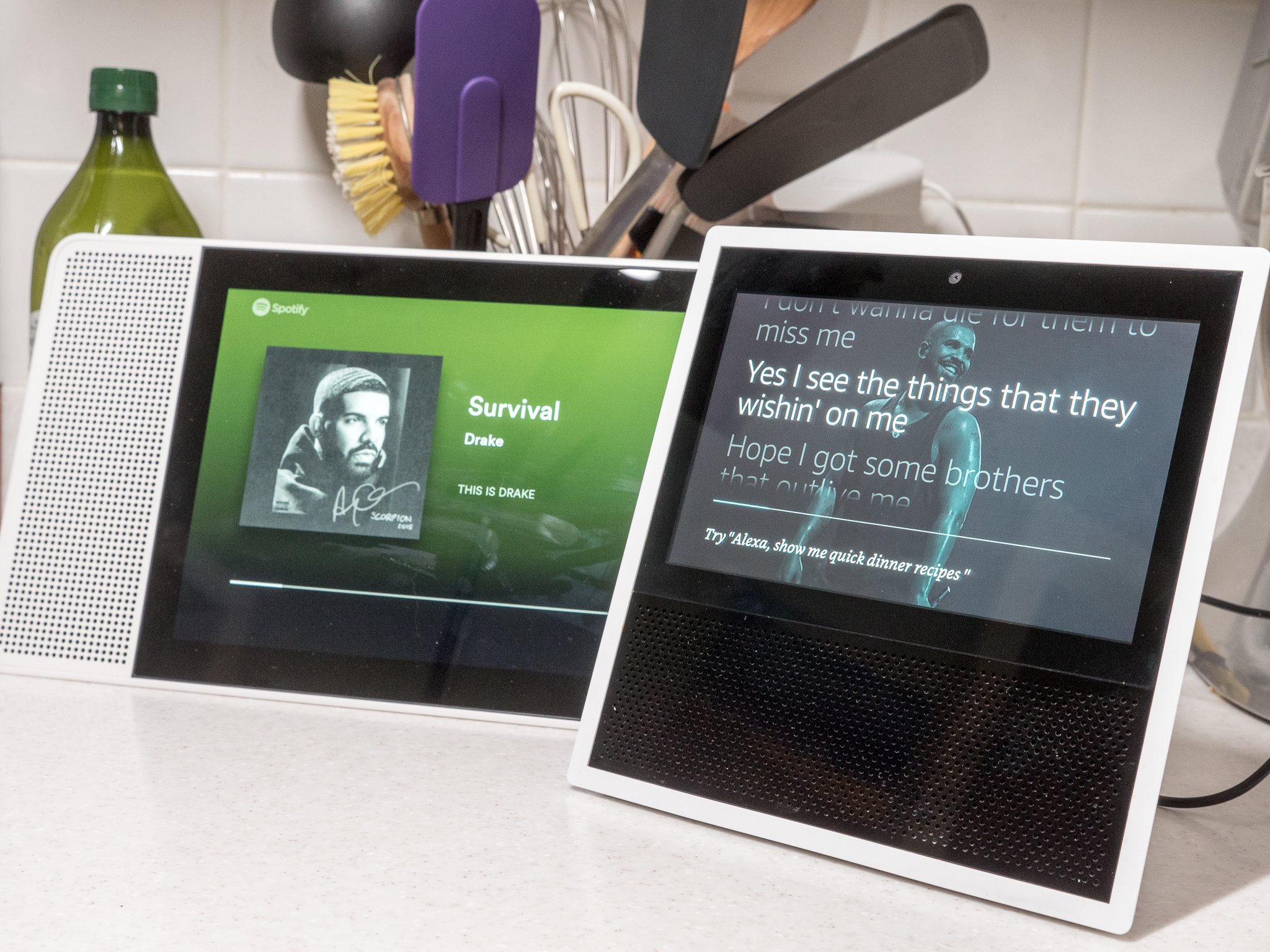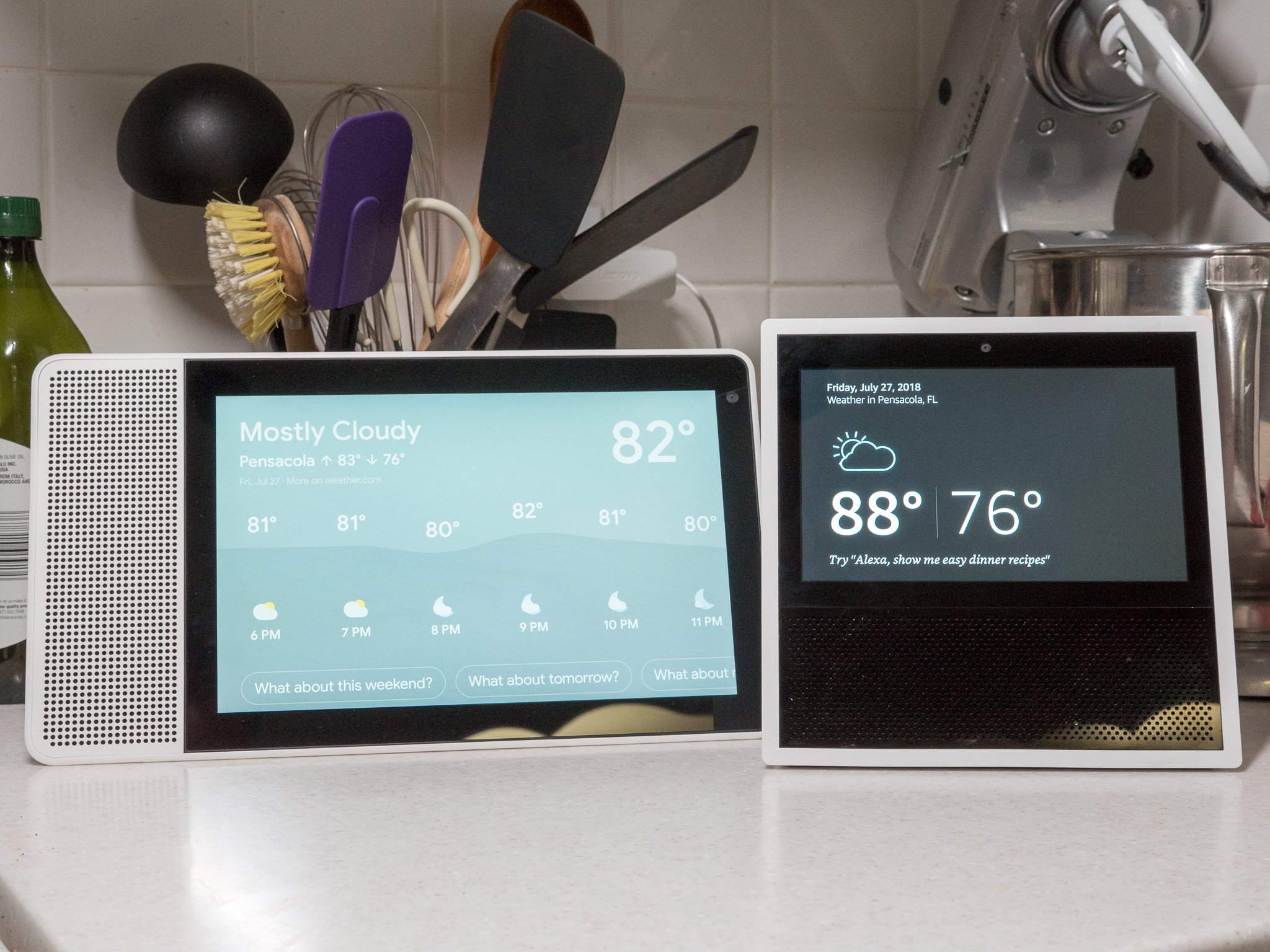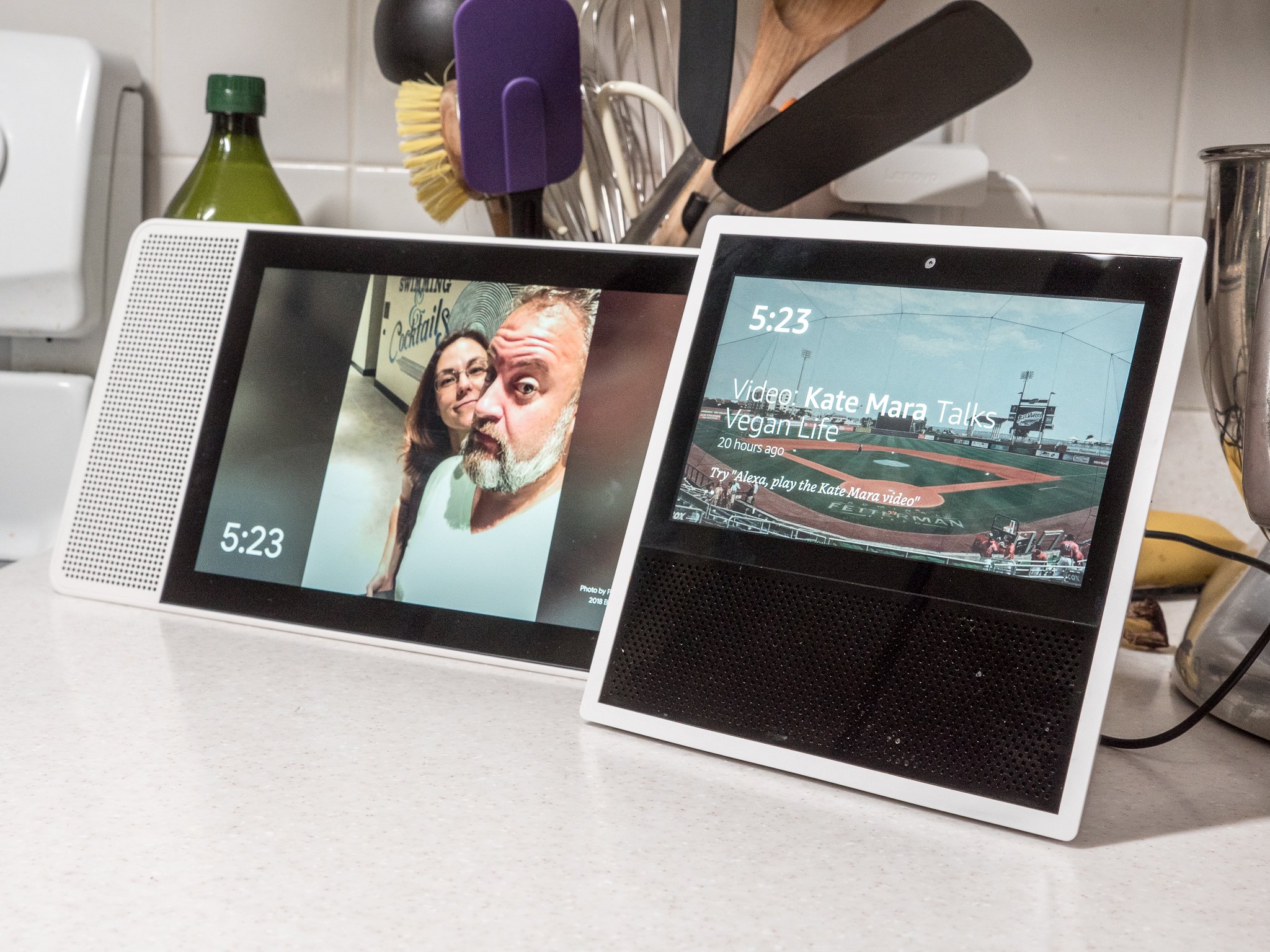 The 10-inch Lenovo Smart Display, left, and the 7-inch Amazon Echo Show.
The 10-inch Lenovo Smart Display, left, and the 7-inch Amazon Echo Show.
Amazon had a full year head start, but Google and Lenovo caught up on launch day.
As great as a virtual assistant can be in your home, the lack of a display can be limiting. In a perfect world, you'd be able to speak and have your home assistant just respond and be reliable all the time, but a huge number of smart speaker owners are compelled to stare at their little boxes to confirm it heard the command and await confirmation. What these people clearly need is a more interactive experience, so the Amazon Echo Show was released to offer more than just a speaker.
In the year since that launch, Google's Android Things initiative has been working hard on competing. The first in that line is finally here, courtesy of Lenovo, called the Smart Display.
How do these two smarter displays compare? Surprisingly, it's pretty close on a lot of things. And that's not good news for Amazon.
Design and specs
Amazon's Echo Show is about as utilitarian as you can get. It's an unassuming wedge with a speaker and a display on the front with buttons up top. This thing is designed to hide away on a kitchen counter or bookshelf and not really catch anyone's eye unless it is being used. Even the white version of the Echo Show doesn't really stand out much.
While the 7-inch display does have a touch interface, you're not going to use it much. Like the Amazon Echo, this is designed to be tucked away somewhere and simply exist. Also like the Echo, the eight-microphone array is designed to act as a far-field system that can hear you more than a room away. And it works really well most of the time.
Audio quality is always a big question with these kinds of things, and to be honest there's very little difference between the two.
Lenovo's Smart Display is very different. It's designed to stand out, to be the central focus of whatever surface it occupies. The white accents and curved bamboo backing make it clear you're going to want to have this out somewhere to be used, instead of tucked away. It takes a lot more space than the Echo Show because its display sits beside the speaker instead of above it, and the unit comes in either eight or ten-inch variants. Technically the larger model can be swapped to either portrait or landscape mode, but for the moment only a single app, Google Duo, supports both orientations.
As much as Lenovo wanted to enable video chat, privacy was also an important future. A mute button like on the Echo Show is present, but so too is a physical cover for the camera. That way you can have Duo set to automatically answer a call if you really want it, but you're not going to be surprised when you don't want to be.
Lenovo doesn't have a fancy name for its microphone set up on the Smart Display, but in our tests, the ability to trigger 'OK Google' worked in just about every situation the Echo Show worked in. There are situations where the Echo Show seemed a little more reliable, but not many.
Audio quality is always a big question with these kinds of things, with so much of what they do being streaming audio or video, and to be honest there's very little difference between the two. Neither is going to hold up against a nice Sonos speaker or Google Home Max, but they're about the same volume and quality as the original Amazon Echo and Google Home. Which is great, especially when you're looking for a speaker that can fill a kitchen with sound while you have all four burners going. Just don't expect one to be radically better than the other in this department.
Software and Experience
Amazon has been constantly updating its Alexa assistant from day one, adding support for new voice commands and accessories on an almost weekly basis. In this respect, Amazon has a tremendous lead over the competition. Developers went to the most popular platform first, so naturally, it has the most support for the most things. If you have a "smart" something, there's a good chance it supports Alexa. If you want Alexa to give you information, chances are there's a third-party feature you can enable to get that information.
The biggest thing separating Alexa from Google Assistant is intuitiveness. Amazon's third-party features feel added on. You don't say "Alexa, tell me about car parts that are on sale" but instead say "Alexa, ask PartyPicker to tell me about car parts that are on sale". That secondary level of communication doesn't exist on Google Assistant. When you enable a third-party tool, it is treated like something you are asking Google for. It feels like a more natural conversation and makes using the speaker for various things a lot easier because you don't have to remember the names of every skill.
Netflix is curiously missing from the streaming video list for now.
Assistant is also much better about natively handling multiple commands in a single sentence right now. I can say "OK Google, turn the bedroom lights on and set the thermostat to 72 degrees" as a single sentence and Assistant will execute both of these commands even though they connect to separate services. It's more natural and polished, which is important when you're trying to get people who aren't well-versed techies to use and enjoy your product.
Google and Lenovo have carried that level of polish to the display as well, at least in most places. The visuals for simple things like the weather are more detail-rich than on the Echo Show. You can have your Smart Display pull from Google Photos when idle to act as a digital photo frame. And you have access to way more video services through Android Things than Alexa.
The obvious ones like YouTube and news sources are available, but also HBO Now, Hulu, CBS, and several others through the Google Home app. Netflix is curiously missing from the list for now, and some of the voice instructions are a little limited, so you wind up using your phone, but it's a serious step forward. These features make it so Lenovo Smart Display is able to act as a proper entertainment platform in rooms where you'd normally hang a small television or bring a tablet with you, and that's a big deal.
All of that having been said, Amazon has one feature I use daily which currently has no equal on the Lenovo Smart Display. The Alexa Drop-in service allows me to have one-on-one conversations with other Echo devices on my network, and it's fantastic. I can call the upstairs Echo and tell my kids its time for dinner, or call the Echo Show when I'm at the grocery store and have someone check in on something in the pantry.
Google offers Duo and Broadcast as comparable features, and in my opinion, they aren't competing right now. No one in my life uses Duo, and while Broadcast is cool for reaching every Google Home device at once it doesn't have a one-on-one call mode. Which is weird, since I can use my Google Home to make actual phone calls to actual phones with no problem.
Which should you buy? Lenovo Smart Display
While Amazon is clearly the market leader right now, and the Echo Show is constantly being improved, Lenovo has made a beautiful smart display here with a decent speaker in multiple sizes to suit your needs. And it couldn't be more clear that Google, in addition to offering YouTube and native Google Services integration, is improving the core Assistant functionality much faster than Amazon is improving Alexa. In many areas, it's not even close, and that's a big deal.


Tidak ada komentar:
Posting Komentar